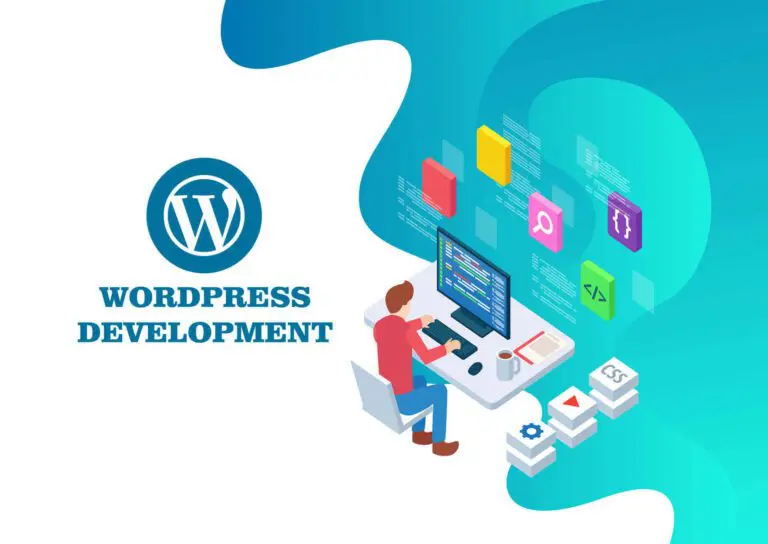InnoSewa, is a Digital Services company helping clients in Digital Transformation & Automation. We constantly make every effort to provide best services to our clients along with making ways for youth to involve into mainstream.
Read More
Latest Trends in Web Technology
Every CTO Should Be Ready for in 2024
Every year, the world of website creation evolves, making it difficult for some firms to survive in this digital era. As a result, in order to remain competitive, firms must keep up with web development trends. And a strong web product is required to strengthen your position in this competitive digital market.
However, identifying the most successful web development trends that can work for your firm may be crucial. As a result, in order to save your time and effort, we have compiled a list of web development trends by analysing market demands in numerous IT industries.
The best method to stay competitive in your business sector is to develop and update your website in accordance with current trends. Let’s take a deeper look at the top website development trends for 2024.
1. Progressive Web Apps (PWAs)

PWA technology ranks top on our list of web development trends. It’s a website-like app with a full-native mobile app experience. It operates autonomously and communicates with clients like a native app.
Here are favourable changes the PWA technology brought for businesses and users:
- Seamless installation
- Saving device storage and power
- Lessened support and development expenses
- Smooth updating and maintenance
- Faster launch to the market
- More flexible distribution
PWAs help websites to load in no time and can also work offline in apps like Google Maps. Companies like Starbucks, Uber, Pinterest, and Twitter have already been using PWAs for a better user experience.
2. Optimized Voice Search

With the growing popularity of voice search, websites that use it will rank higher in search engine results than those that don’t. Because voice searches are natural language searches, the material on your site must be written for humans rather than machines. Furthermore, mobile-friendly websites are more likely to score highly.
Millions of people now use voice search, and its popularity is growing. As a site developer, you must keep ahead of the curve by including voice search optimization into your content strategy.
3. Motion User Interface (UI)

Consumers today want not only faster and more mobile-friendly digital experiences, but also richer and more interactive ones.
That is one of the reasons Motion UI has grown in popularity. Motion UI is a front-end framework that allows developers to create completely responsive webpages and mobile applications while also utilising predefined motions in a native app scenario. You can use this framework to create an element slide, spin, bounce, transition, and many other things.
Motion UI is a Sass library for creating CSS transitions and animations for your website or app. While this has been around for a while, it is projected to become even more popular in 2024 as people seek more interactive and engaging websites and applications than ever before.
4. Accelerated Mobile Pages (AMP)

Google introduced accelerated mobile pages (AMP) in 2015 with the goal of providing mobile consumers with lightning-fast digital experiences. Google’s AMP can help enhance fundamental business metrics such as the amount of conversions on web pages, in addition to offering smooth user experiences and minimising bounce rate.
5. Single Page Applications

Single-page apps (SPAs), one of the most significant current innovations in web development, are JavaScript-based online applications that load a single HTML page in a visitor’s browser and dynamically update content as needed without refreshing the page. The development community, as well as Google, Facebook, and Twitter, have all embraced SPAs.
SPAs consume less server space and give information to consumers efficiently on a single page without the need to wander around, in addition to being cost-effective and reasonably straightforward to construct thanks to the popular AngularJS framework. These advantages make SPAs a win-win situation for both developers and site visitors.
We should expect the SPA trend to continue through 2024, as online consumers seek faster and simpler app experiences.
6. AI Chatbots

By integrating machine learning, natural language processing, and information retrieval techniques, AI chatbots are predicted to become even more intelligent in addressing the needs of and matching the behaviour of users in 2024.
AI-enabled chatbots help improve the customer experience in addition to supporting businesses in executing faster procedures via voice or text chats. They can collect data, answer commonly asked questions, and resolve other difficulties, allowing customers to have more smooth digital interactions with a corporation.
Many well-known B2C organisations now use AI chatbots to service their clients. According to Forbes, marketers’ use of AI surged by 190 percent between 2018 and 2020, with many working through Facebook Messenger, Whatsapp, and Skype rather than traditional chatbots. In 2024, we can expect more businesses to employ AI chatbots.
7. Serverless Architecture

The search for technology that can assist reduce system overloading, data loss, and development costs has been continuing. This search yielded serverless technology.
Serverless architecture is based on cloud technology and enables users to run code for nearly any form of application or backend service with no administration. There is no need to provision, manage, or upgrade servers. Amazon, Google, and Microsoft are the most prominent corporations that use and provide serverless architecture.
According to projections, the worldwide serverless architecture industry would rise from $7.6 billion in 2020 to $21.1 billion by 2025. This suggests that additional companies will enter this market in 2021 and beyond.
More products, such as chatbots, IoT apps, and APIs, will use serverless functions to execute tasks such as obtaining file backups, sending notifications, and exporting objects.
8. WordPress Development

The WordPress CMS powers approximately 40% of all websites, and such a significant presence deserves care. WordPress, an open-source platform, is constantly adding new features to fulfil the demands of its customers. WordPress developers must be mindful of how the platform evolves over time.
Gravity Forms CEO Carl Hancock anticipates the introduction of Full Site editing in 2022, which would extend block editing functionality to the entire website, rather than just articles and pages: “2024 will be a watershed moment for the CMS, as it introduces the most significant modification to theming in the open-source project’s history: Full Site Editing.” Full Site Editing, which is set to be launched in WordPress v5.9, is set to usher in a dramatic shift in how web sites are produced and managed using WordPress in the future.”
9. Dark Mode Standardization / Dark Mode UI

The dark mode trend has exploded in popularity around the world, and we predict it to skyrocket in the future years. A dark-themed website, due to its visual design pattern, makes it easier for consumers to enjoy web browsing regardless of device.
According to an Android Authority survey, 81.9 percent of respondents acknowledged the use of dark mode on their devices, while 9.9 percent switched between light and dark mode. According to another Polar survey, 95 percent of consumers prefer dark mode to light mode.
Tech behemoths such as Google, Facebook, Reddit, and Twitter are already utilising dark mode UI, and many more will follow suit.
Some advantages of dark mode UI are:
Reduces blue-light
Saves battery life
Makes UI content accessible and legible to all
Lowers eye strain even in low light conditions
Since many web developers provide the same in-built feature to move between dark and light modes, we expect it to become a rule in 2022 and beyond.
10. API-First Development

The API-first development approach meets the needs of users. When users view a website, developers can complete their jobs while simultaneously pushing the code. It reduces development costs while increasing delivery speed.
urthermore, this method permits new websites to become content delivery sources. You can access a CMS created in this method from browsers and smart kiosks or cars.
Some notable perks of the API-first development are:
- Enhanced adaptability
- Quicker time-to-market
- Lessened development expense
- Enhanced client experience
Conclusion
The web development trends outlined above will alter how organisations engage with their customers beginning in 2024. Using these technologies will increase user engagement and assist your company in staying ahead of the competition.
Choosing a reliable web development company is one of the best prerequisites for adopting one of these key web development technologies to reach your business goal.





